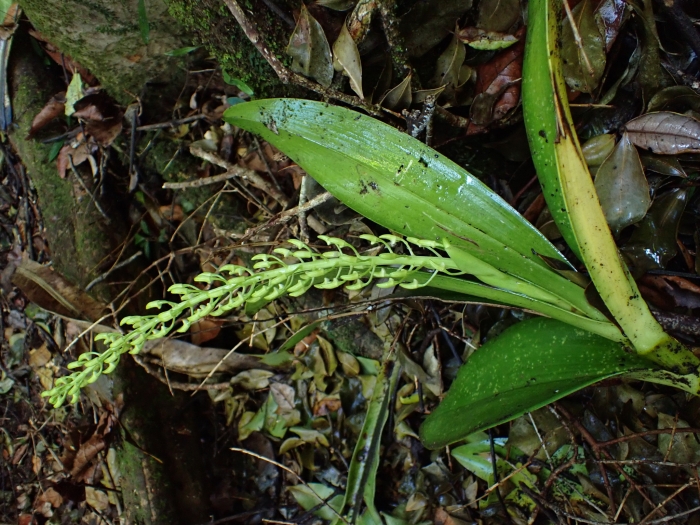Rock Orchid
(Dendrobium speciosum)
Rock Orchid (Dendrobium speciosum)
/
/

Milan Chytrý
CC BY 4.0
Image By:
Milan Chytrý
Recorded By:
Copyright:
CC BY 4.0
Copyright Notice:
Photo by: Milan Chytrý | License Type: CC BY 4.0 | License URL: http://creativecommons.org/licenses/by/4.0/ | Rights Holder: Milan Chytrý | Publisher: iNaturalist | Date Created: 2023-09-01T10:19-07:00 |





















Estimated Native Range
Summary
Dendrobium speciosum, commonly known as the Rock Orchid or Cane Orchid, is an epiphytic or lithophytic perennial herb native to a variety of habitats along the eastern coast of Australia, from Queensland to Victoria. It thrives in diverse environments, including coastal and subalpine areas, rainforests, and open forests, often forming extensive colonies on rocks, cliff faces, and trees. This orchid can be found at elevations from sea level up to 2953 feet (900 meters). Dendrobium speciosum is notable for its large, cylindrical pseudobulbs and leathery leaves, which can reach lengths of up to 24 inches (60 centimeters). It produces showy racemes of cream to yellow flowers, which can be quite spectacular when in full bloom, typically in late winter to spring.
The Rock Orchid is valued for its impressive floral displays and its ability to attract pollinators such as the stingless bee Tetragonula carbonaria. It is a popular choice for cultivation in orchid collections and is often used in mounted displays due to its epiphytic nature. Gardeners appreciate its adaptability to a range of light conditions, from bright indirect light to dappled shade, and its preference for well-draining orchid potting mixes. While it is relatively easy to maintain, it does require high humidity and regular watering during the growing season, with a reduction in water during the dormant period. Overwatering or poor drainage can lead to root rot. It is also susceptible to pests such as scale insects and aphids.CC BY-SA 4.0
The Rock Orchid is valued for its impressive floral displays and its ability to attract pollinators such as the stingless bee Tetragonula carbonaria. It is a popular choice for cultivation in orchid collections and is often used in mounted displays due to its epiphytic nature. Gardeners appreciate its adaptability to a range of light conditions, from bright indirect light to dappled shade, and its preference for well-draining orchid potting mixes. While it is relatively easy to maintain, it does require high humidity and regular watering during the growing season, with a reduction in water during the dormant period. Overwatering or poor drainage can lead to root rot. It is also susceptible to pests such as scale insects and aphids.CC BY-SA 4.0
Plant Description
- Plant Type: Herb, Bulb
- Height: 1-2 feet
- Width: 1-2 feet
- Growth Rate: Moderate
- Flower Color: White, Yellow
- Flowering Season: Summer, Fall
- Leaf Retention: Evergreen
Growth Requirements
- Sun: Part Shade
- Water: Medium
- Drainage: Medium, Fast
Common Uses
Bee Garden, Fragrant, Low Maintenance, Potted Plant
Natural Habitat
Native to a variety of habitats along the eastern coast of Australia, including coastal and subalpine areas, rainforests, and open forests
Other Names
Common Names: Rock Orchid, King Orchid, Wood-Lily, Sydney Rock Orchid
Scientific Names: , Dendrobium speciosum, Callista speciosa, Dendrobium speciosum var. typicum, Dendrocoryne speciosum, Thelychiton speciosus, Tropilis speciosa,
GBIF Accepted Name: